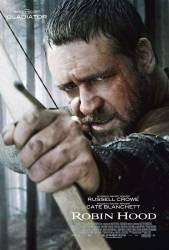Continuity mistake: The Sheriff asks why Marion is treating him like an enemy when she knows that he wants her, and has just forcefully grabbed her. His right thumb is on her left cheek in medium shots and is missing in close-ups of Marion's face.
Suggested correction: I just watched that scene and there are two angles. One on Marion's face, the other on the sheriff's face. You can see the sheriff's thumb on Marion's face shot. His thumb can be seen briefly in the reverse angle.
Other mistake: The impression of Robin Hood's hands in cement, made as a child, match the size of his adult hands.
Suggested correction: There were two sets of handprints. The one on the left was that of a child. The one on the right was that of an adult. When Robin reopens the slab, the prints are covered in mud and debris. He runs his hand over the child print then puts his hand in the adult print of his dead father.





